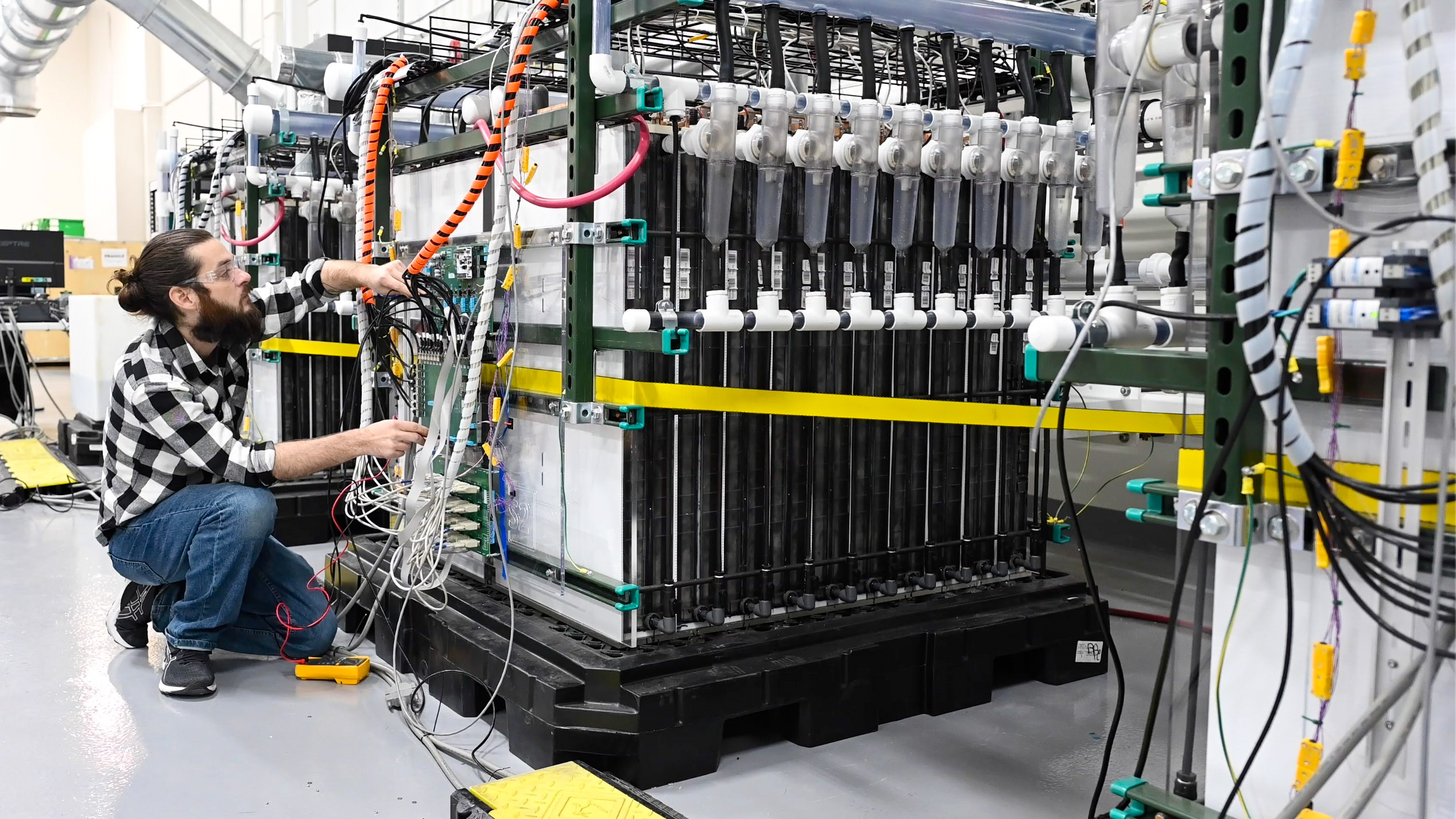2023 Climate Tech Companies to Watch: Form Energy and its iron batteries
Cheaper batteries made from widely-available materials could help the grid transition more quickly towards renewables.

Explore the 2023 list of 15 Climate Tech Companies to Watch.
Form Energy is building iron-based batteries that could store renewable energy on the grid for long stretches, saving up for times when electricity sources such as wind and solar aren’t available. Using iron, one of the most common metals on the planet, could help the company build batteries that are cheap enough to be practical.
Intro
Form Energy is building a new type of battery made with some of the most common materials on the planet: iron, air, and water.
Solar panels and wind turbines provide more of the electricity that courses through the grid with each passing year. But there are still stretches where the sun isn’t shining and the wind isn’t blowing, and energy storage is becoming crucial for filling in those gaps.
Form Energy uses an iron-air chemistry in its batteries: as they store energy, the iron combines with oxygen, converting to rust. As energy discharges, the reverse reaction happens, regenerating the iron metal and oxygen.
Cost is king in energy storage, which is why Form is aiming for its alternative battery system to cost $20 per kilowatt-hour (a measure of how much energy is stored or delivered). That’s less than one-fifth the cost of lithium-ion cells today. Iron-air batteries are heavier and bulkier than lithium-ion and many other energy storage options, but they could be an ideal solution for large installations on the grid, where weight and size are less important than cost and durability.
Key indicators
- Industry: Energy storage
- Founded: 2017
- Headquarters: Somerville, Massachusetts, USA
- Notable fact: Form Energy’s batteries store energy using electrochemical reactions that basically cause metal to rust, then reverse that process.
Potential for impact
Electricity production accounts for roughly a quarter of global emissions. If Form Energy’s iron-air batteries can store renewable energy to use when there’s no sun or wind, they could help the grid transition away from fossil fuels.
About 28 gigawatts of grid batteries were operational and storing energy worldwide in 2022. But to stay on track for net-zero emissions, that number needs to grow by over 30 times, to 967 GW, by 2030, according to the International Energy Agency.
Caveats
It’s hard to bring new battery types to market, and many battery startups have folded under the demands of scaling up production of a new chemistry. Form Energy has yet to start commercial manufacturing in its factory or install any commercial systems with customers. Getting those systems built, installed, and running will be crucial to reveal how well iron-air batteries work in real-world conditions.
Plenty of other technologies are also out there vying for a spot on the grid. From other iron-based batteries, like those from ESS Inc., to zinc-based options from Eos, to the incumbent lithium-ion batteries of all shapes and sizes, there’s a wide range of competition in energy storage. There are even physical systems that go beyond batteries. Iron-air batteries will need to meet promises for cost and performance to carve out a section of the growing market.
When
Form Energy started building a new factory in May in West Virginia, on the site of an old steel mill. The company plans to start making batteries there in 2024 and scale to its full capacity by 2028.
Next steps
In addition to building and starting up its factory, the next few years could see Form install its first commercial projects. First on the schedule is the company’s project with Great River Energy, a pilot system that can store 150 megawatt-hours of electricity. That’s expected to come online in late 2024.
The company recently announced plans for two larger energy storage systems that can store 1,000 MWh of electricity each, one in Minnesota and another in Colorado. Those facilities could come online as early as 2025, though the site in Colorado still need state regulatory approval. A third system is planned for New York, due to start operations by 2026.
Explore the 2023 list of 15 Climate Tech Companies to Watch.
Correction: This story was updated to accurately reflect the state of the company’s regulatory approvals for its systems.
Deep Dive
Climate change and energy
This classic game is taking on climate change
What the New Energies edition of Catan says about climate technology today.
How battery-swap networks are preventing emergency blackouts
When an earthquake rocked Taiwan, hundreds of Gogoro’s battery-swap stations automatically stopped drawing electricity to stabilize the grid.
The world’s on the verge of a carbon storage boom
Hundreds of looming projects will force communities to weigh the climate claims and environmental risks of capturing, moving, and storing carbon dioxide.
The cost of building the perfect wave
The growing business of surf pools wants to bring the ocean experience inland. But with many planned for areas facing water scarcity, who bears the cost?
Stay connected
Get the latest updates from
MIT Technology Review
Discover special offers, top stories, upcoming events, and more.